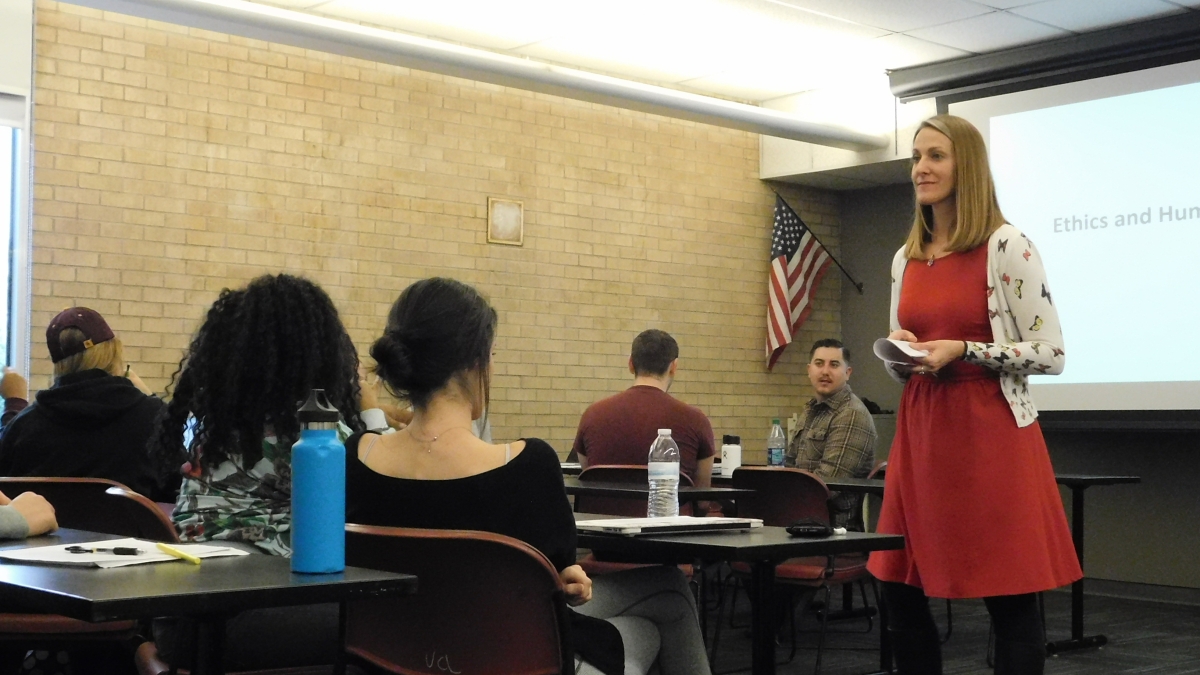Alissa Ruth, an associate academic professional at Arizona State University, knows firsthand that making your way through the many layers of higher education can be a bewildering process, especially if you’re a first-generation college student like she was.
“When I was an undergraduate, I had no idea what a master’s was, and I didn’t know if I needed one,” she said. “Even going into my PhD after that, it was really hard navigating the system.”
Besides these common difficulties, potential graduate students from some demographics also report additional obstacles, such as a lack of representation and role models in higher education fields.
“We’ve seen over the last year or two this call for more diverse faculty to be represented in universities across the country. But when you look at the stats in most PhD programs, it’s just not representative of the U.S. population,” Ruth said. According to the U.S. Department of Education, African American and Hispanic students earn about 13 percent of all doctoral degrees, even though, by the U.S. census, they make up almost 30 percent of the population.
To help address this issue, she pioneered the “Access, Equity and Inclusion in Higher Education” project last spring, which strives to understand how to increase underrepresented students’ participation in grad school, particularly within the social sciences.
As the director of strategic initiatives for teaching and learning at the School of Human Evolution and Social Change, she is in a unique position to influence and work with students directly by teaching a practicum course for undergraduate students by the same name as her project. There, students get practical experience doing research by helping Ruth collect data.
In part one of the course last spring, 21 students chose a central research question related to the project, and then, after learning practical skills like research ethics, how to work with human subjects and data-collection methods, gathered the relevant data by interviewing ASU grad students.
The result was a whopping 100 surveys’ worth of insights into the graduate school experience, as well as information about where grad students received the most support or discouragement for pursuing graduate school.
Ruth is currently coding and analyzing this data, with a focus on comparing first-generation and non-first-generation graduate students. Part two of the course takes place this spring with 20 students who will participate in more in-depth qualitative research.
Students in Ruth’s course also provide data as research participants themselves; they are tested at the beginning and end of the semester to see how much they learn about graduate school, and they write a final reflection piece to help identify what their future career goals are.
For some, that may be graduate school, while for others it may be a career. The chief takeaway is that they understand what graduate school is and the cost-benefit options it may present them if they chose to go that route.
“I have a passion for access to education, so while I don’t think everybody should automatically go to graduate school, I do think everybody should have the opportunity to go,” Ruth said. The hope of her project is that if a more diverse group of students understand that opportunity, more will choose to pursue it.
Ruth plans to follow up with students on how they’re meeting those stated goals in the next two to three years, but some are citing benefits from this participation already, including Ruth’s former student and ASU alumnus, Paola Parra.
Not only did the project open Parra’s eyes to her ability to get into graduate school, it gave her the research training she needed for her current position as a clinical research coordinator in Guadalajara, Mexico.
“The most valuable part for me was the training, such as how to properly go through an informed consent document, how to conduct a professional survey and how to code data,” she said. “While on my second phone interview with my now-employer, they asked me if I had any experience with research. I told them about the work I had been doing in this class, and I'm pretty sure that is the reason they hired me on the spot.”
Additional results from Ruth’s study are still forthcoming, but she has noticed at least one initial trend in what shapes students’ decisions to go to grad school.
“A lot of times it’s a professor or a friend completing a program who said something to encourage the possibility of graduate studies. Oftentimes, it is the faculty who students see on a regular basis and trust. Somebody planted the seed,” she said.
This is certainly true of Ruth’s own experience. As a college freshman, her Spanish professor told her about how studying abroad had been such a formative time for her, which inspired Ruth to study abroad herself. This led her to teach English in Mexico for two years, where others in graduate school encouraged her to continue her studies, leading to her eventual master’s and doctoral degrees.
Ruth’s current position brings her almost full circle, as she now works with her school’s study abroad programs and encourages her peers to share more stories from their own educational journeys with students to help widen the funnel of opportunities for all.
“Had my professor not talked about these options, who knows where I would be?” she said.
More Arts, humanities and education

ASU alum's humanities background led to fulfilling job with the governor's office
As a student, Arizona State University alumna Sambo Dul was a triple major in Spanish, political science and economics. After…

ASU English professor directs new Native play 'Antíkoni'
Over the last three years, Madeline Sayet toured the United States to tell her story in the autobiographical solo-…

ASU student finds connection to his family's history in dance archives
First-year graduate student Garrett Keeto was visiting the Cross-Cultural Dance Resources Collections at Arizona State University…
